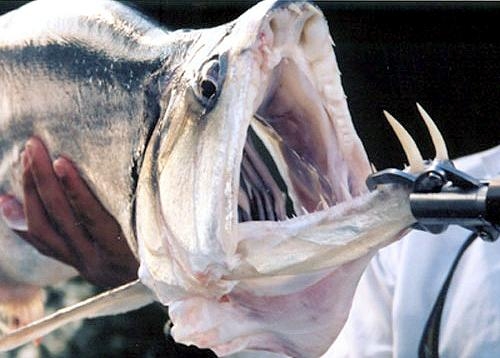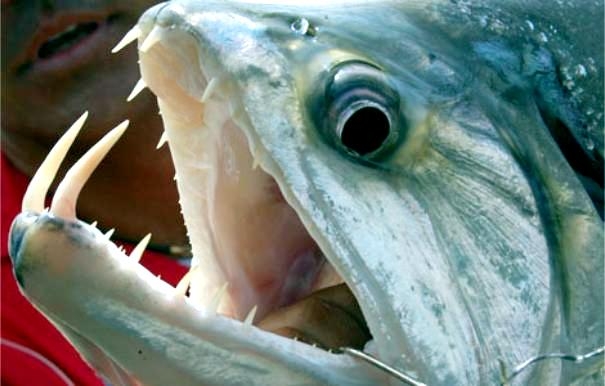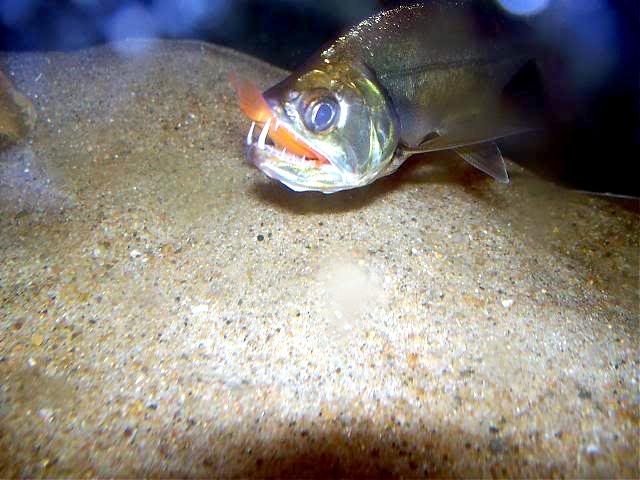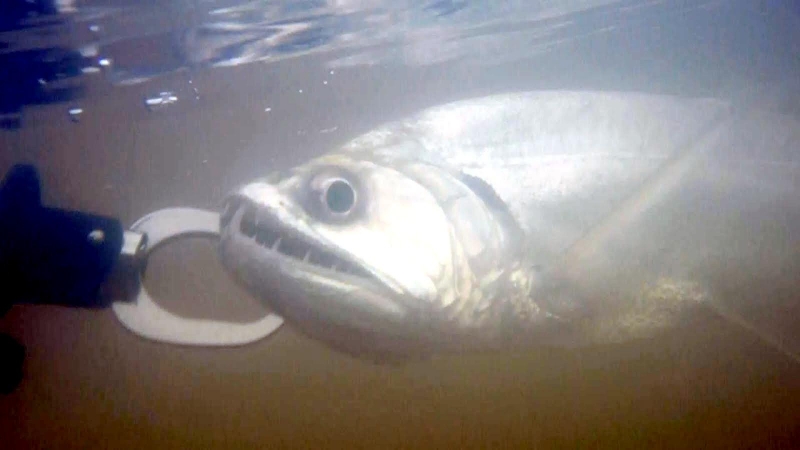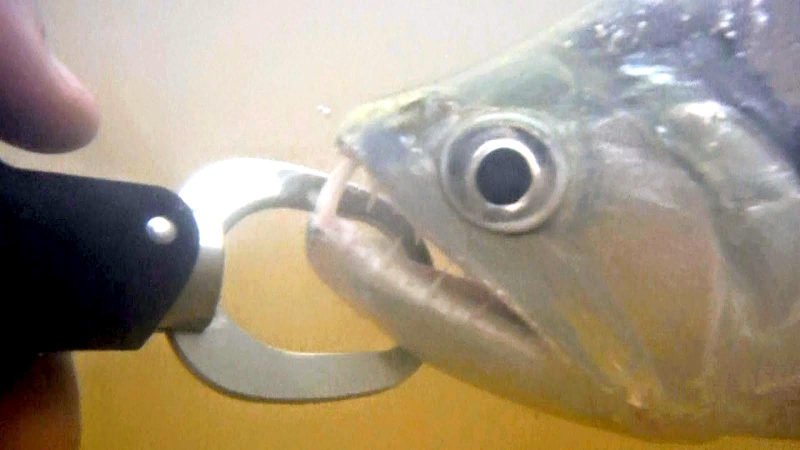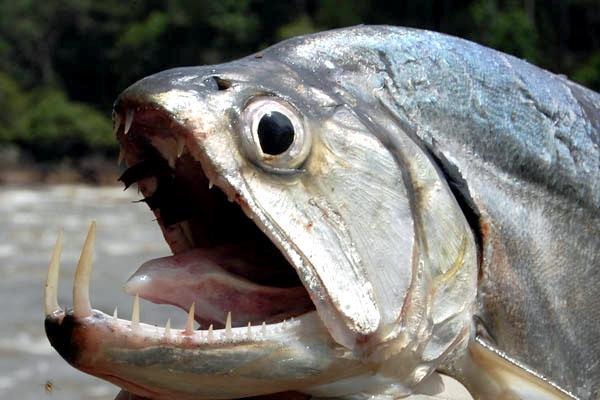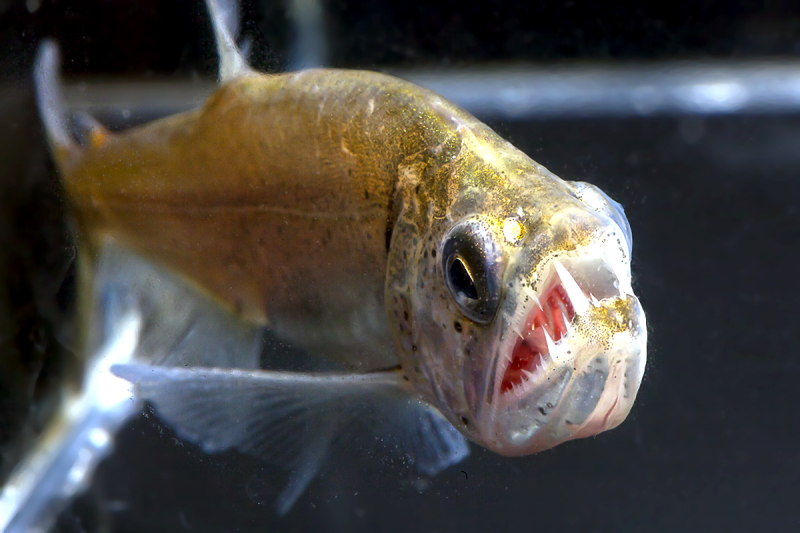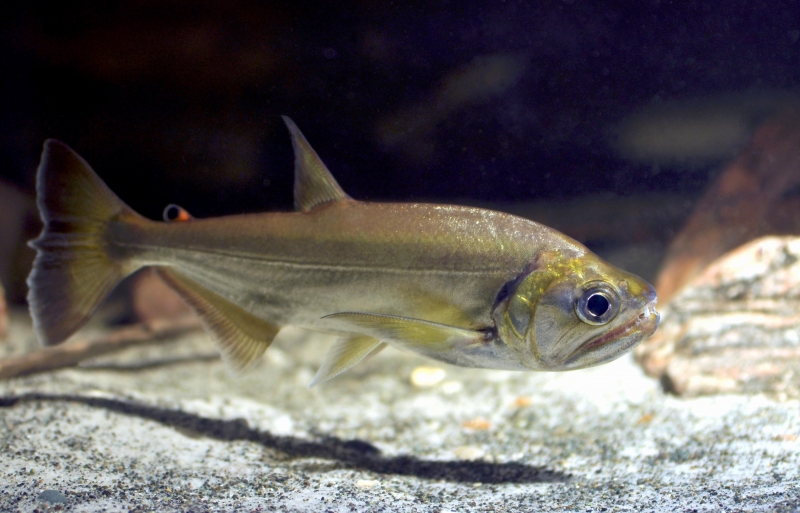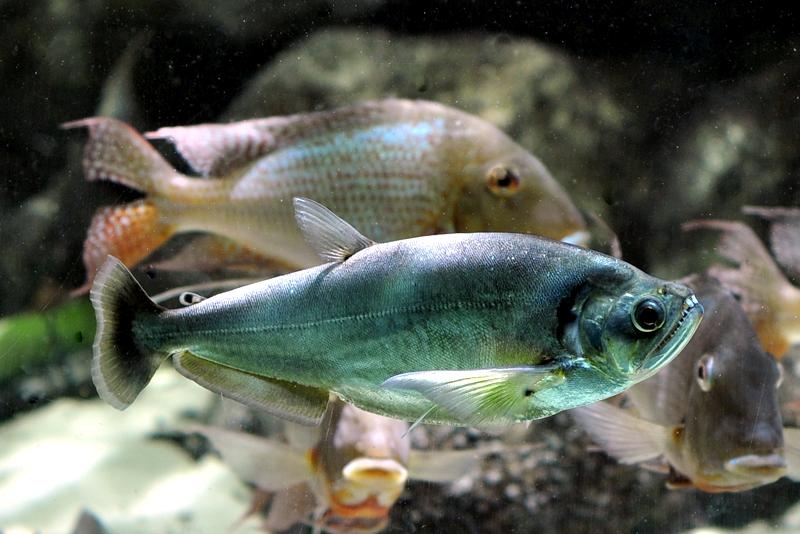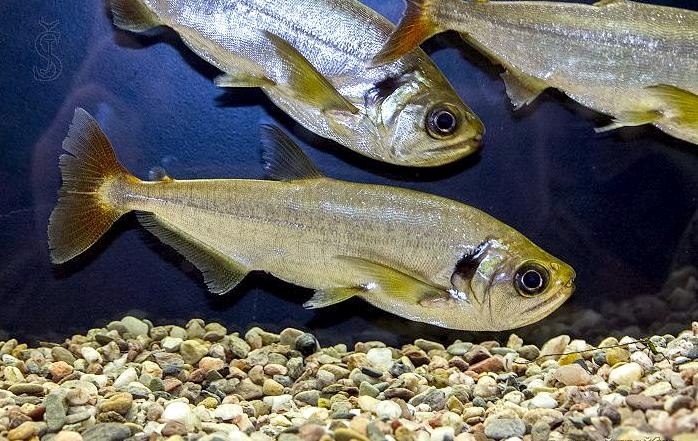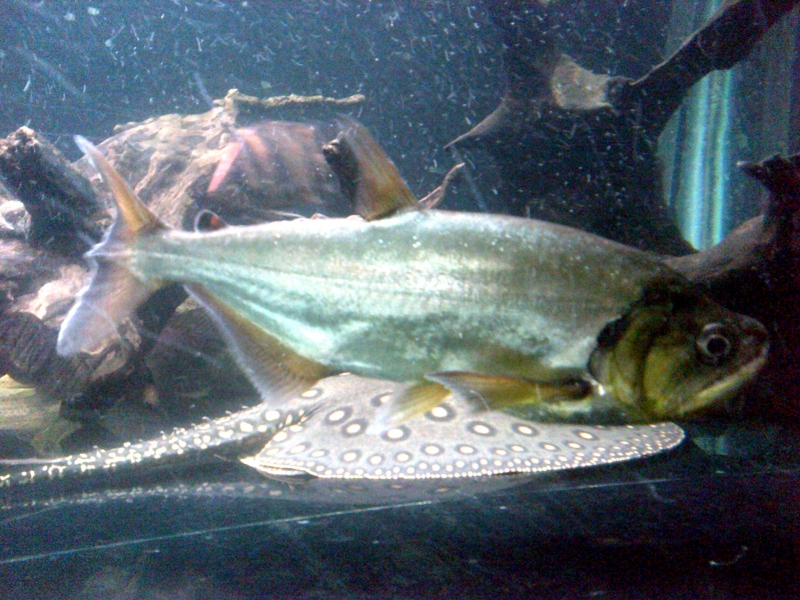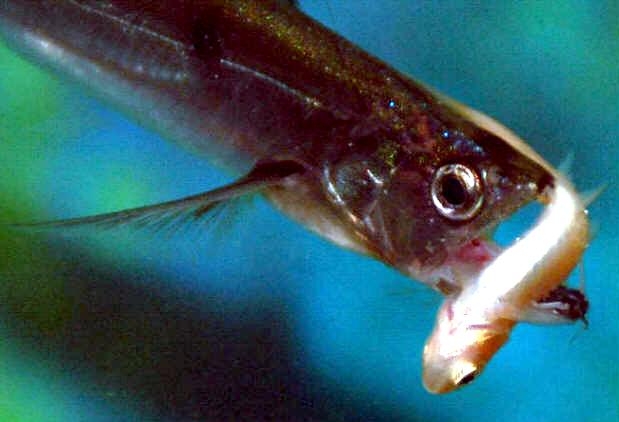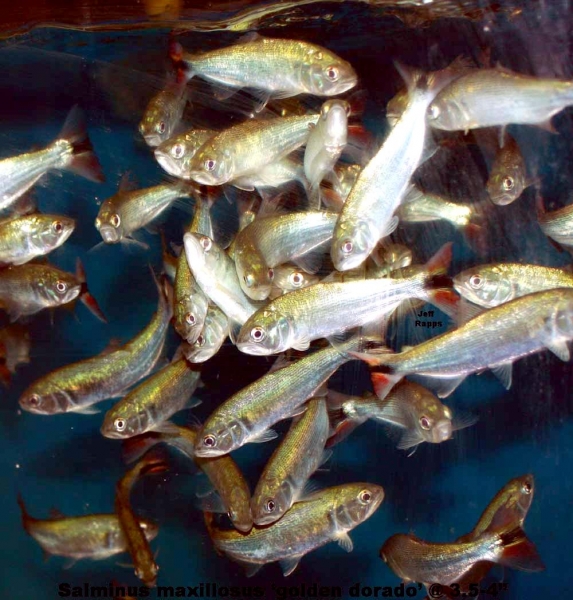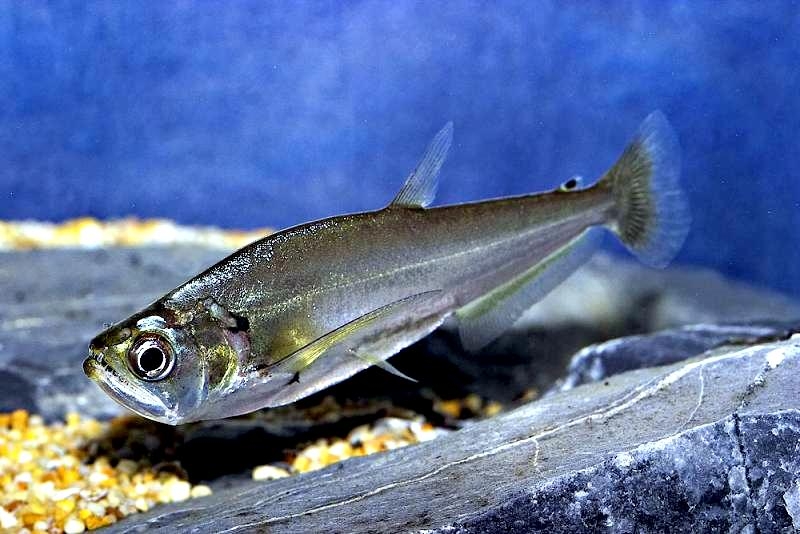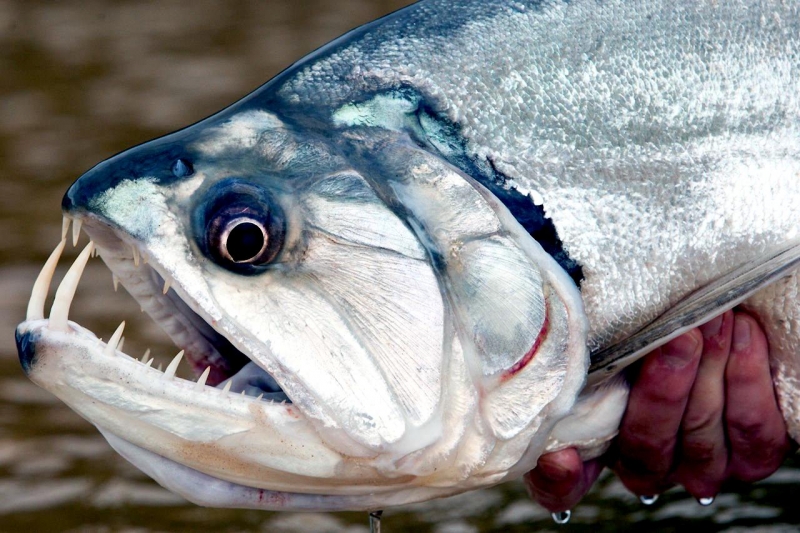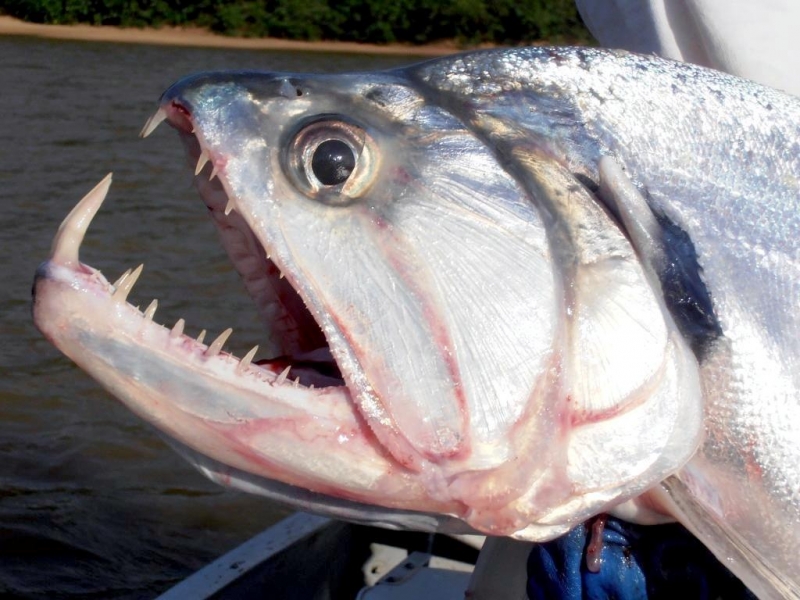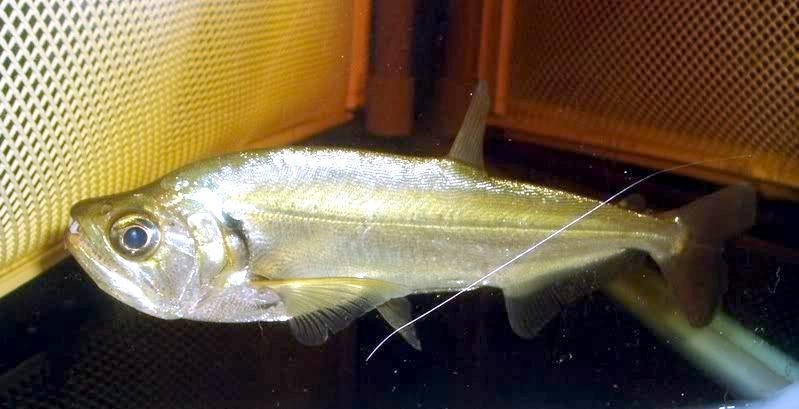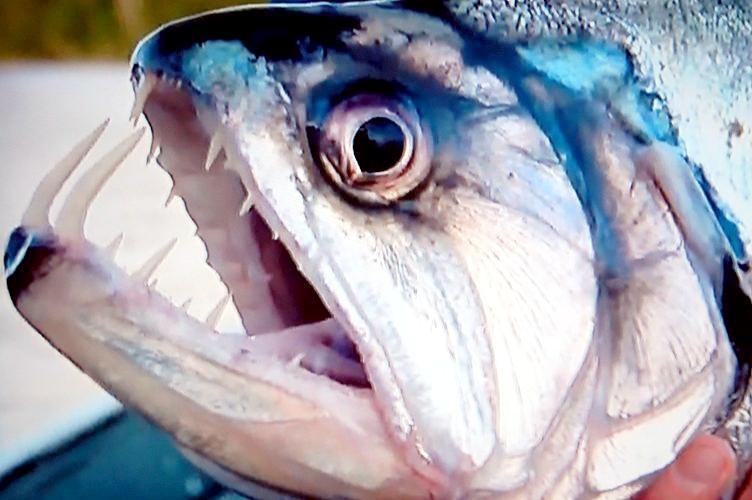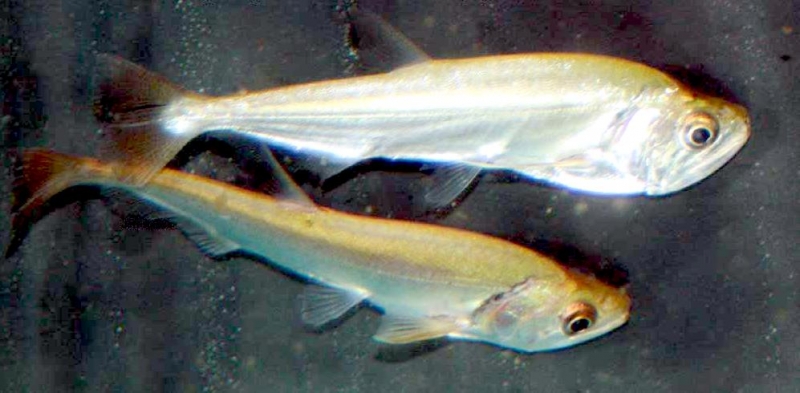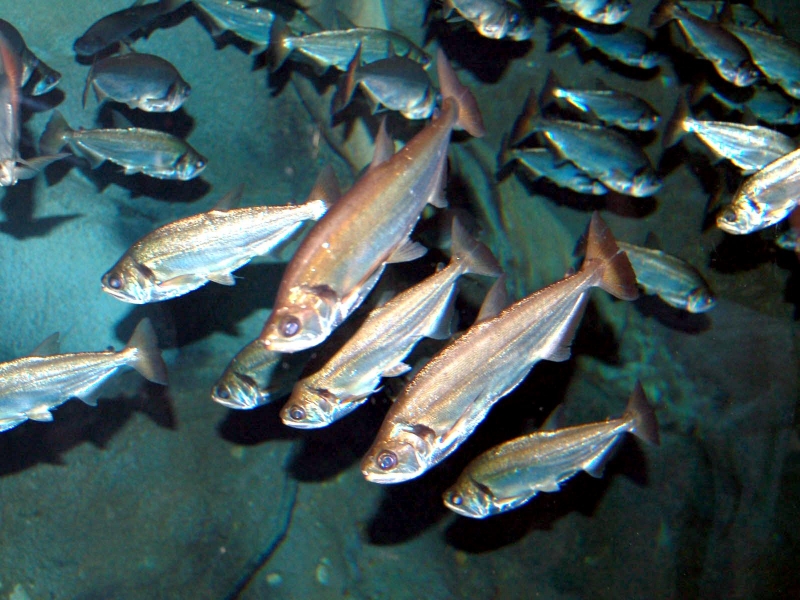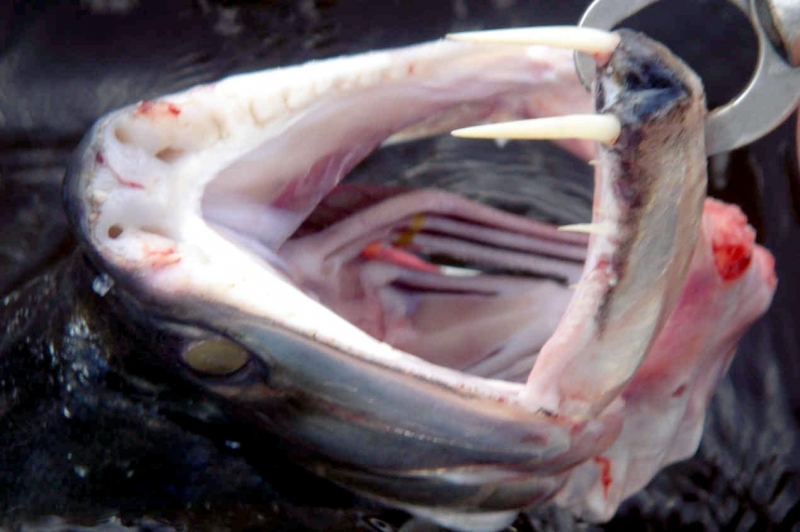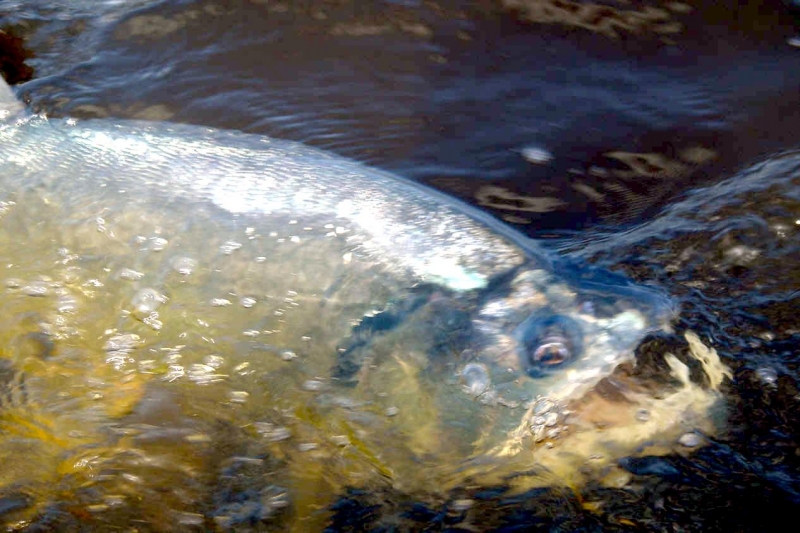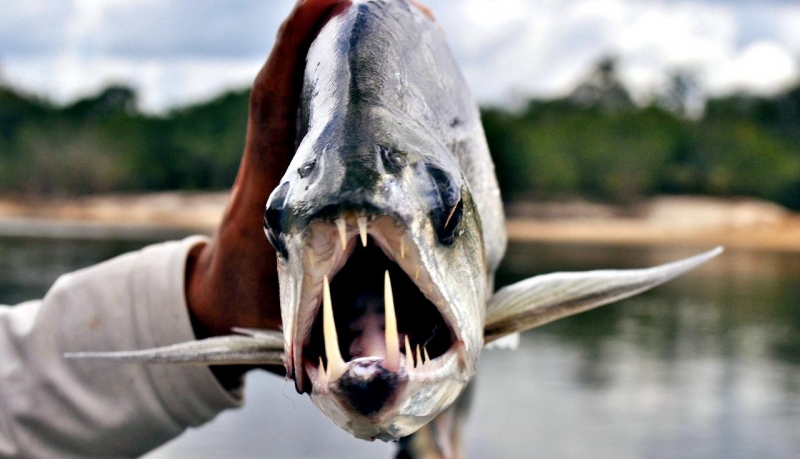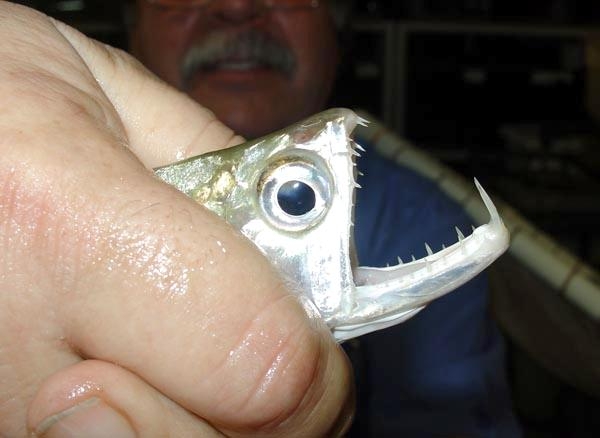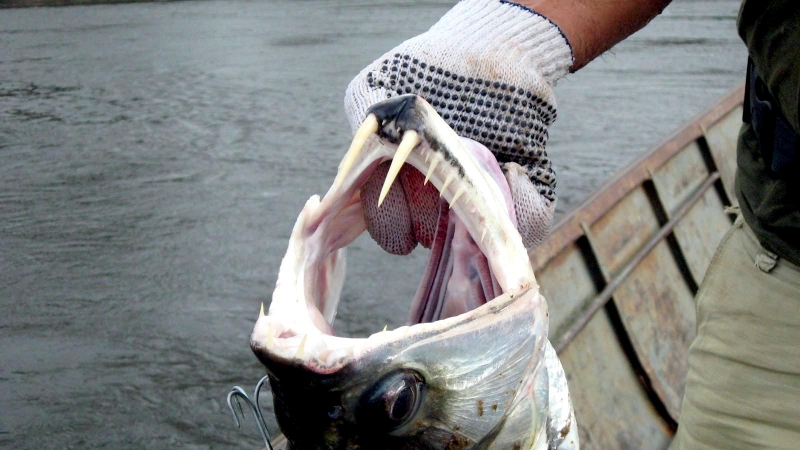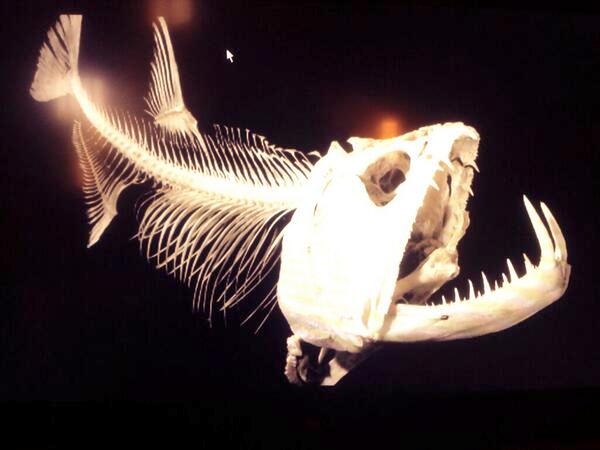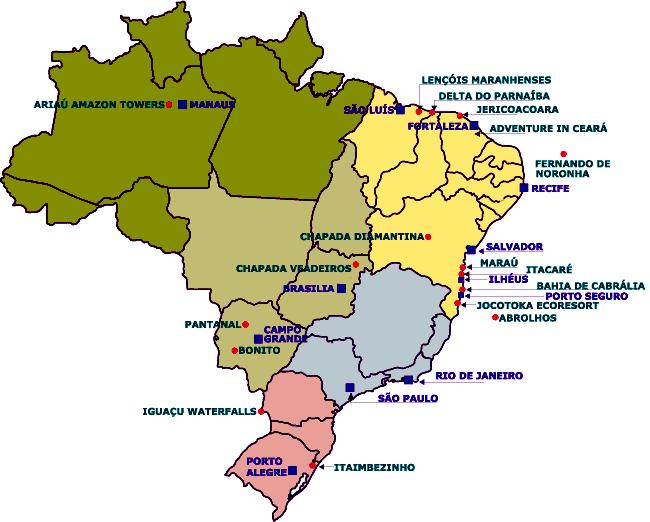“Hydrolvcus scomberoides”
Anything with the name “Vampire Fish” should automatically be recognized as scary and the Payara is no exception. They are absolutely ferocious predators, capable of devouring fish up to half their own body size. Given that they can grow up to 1.2 meters (4 feet) long, this is no mean feat. A large part of their diet is made up of Red & Black Piranhas, which should give you some idea of how tough these fanged fiends can be. They get their name from the 2 tusks that sprout from their lower jaw, which can grow up to 15 centimeters (6 inches) long and which they use to literally impale their prey after viciously lunging at them. Payara fangs are so big in fact, that they have special holes in their upper jaw to avoid impaling themselves. Payaras are better described as silver missiles with an attitude. They literally hit any bait and keep running like an express train on steroids. They have a salmon-like body, complete with an adipose fin but a stronger demeanor and a face full of impressive daggers for teeth, in particular 2 huge fangs growing from their lower laws that fit into conical nasal slots in their upper jaws.
Payaras sport a uniform, bright silver color along their flanks with an olive back and an orange & black tail. They normally impale their victims with their over-sized bottom canine teeth and streak away. Their usual prey are anything from a third to a half of their own length. Payaras are found wherever there is current, either along a bank, off points, on the main rivers or even in submerged trees. The Payara is a little-known species of rare game fish that can be found living in the Orinoco River of Venezuela and the Amazon River basin. They are an extremely predatory species as well as cannibalistic. Payaras can eat fish that are half their own body size, but their diet may include smaller fish, however it consists mainly of Payaras using their sharp fangs to impale them with. This fish is popular among sport fishers because it is considered to be one of the fiercest struggling freshwater fishes, putting up an impressive fight. This is due to its living & hunting in fast-moving water or rapids. While they grow to such great lengths in the wild, in captivity the Payara rarely grows to 12 inches in length and usually die mysteriously before they do. The greatest concentrations of Payara have been found at the Uraima Falls on the Paragua River in southeastern Venezuela, Lake Guri in the same region and Venezuela’s Orinoco, Ventuari and Caura Rivers.
